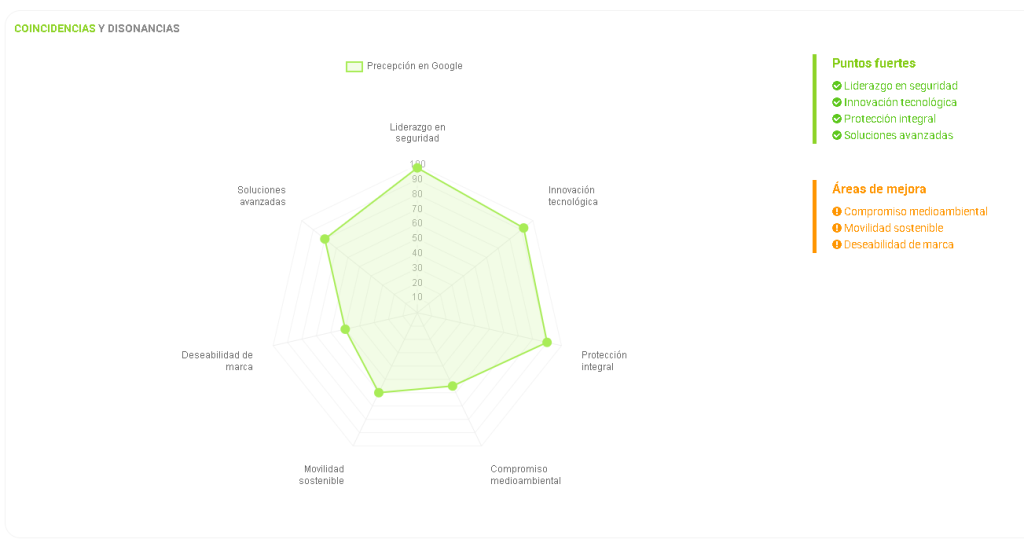Take Control of Your Brand Narrative
Every action, every message and every media appearance helps build or distort how your brand is perceived.
If you don’t take charge of your narrative, someone else will do it for you.
In the past, brand perception was easier to manage through well-executed communication strategies. A strong relationship with the media often helped maintain that control.
Today, however, everyone is a communicator. From social media to reviews and platforms like Trustpilot, any opinion can shape your brand’s reputation. The narrative is no longer something you control, it’s something you must manage proactively.
Without a clear strategy, your brand risks losing direction and credibility
Start at the Core: Vision, Mission and Values
It’s what allows you to align your messaging, strategy and brand credibility across every touchpoint — from PR campaigns to marketing and SEO efforts. This is the starting point for building brands with purpose, consistency and real authority.
1. The Mission: The Reason You Exist
Your mission explains why your company exists and the value it brings to customers or society.
It’s not just a feel-good statement. It’s the guiding principle that connects your day-to-day work with the impact you aim to create.
Affinity Pro’s Mission:
We help brands understand how they are perceived and communicate the right message in the media and environments that matter, combining artificial intelligence and strategy to build true authority.
What is a company's mission?
A company’s mission defines its core purpose — what it does, why it does it, and the value it creates.
It serves as a reference point for decision-making, internal culture, and strategic direction.
How to define it:
Describe what your company does (products or services)
Identify who it serves
Highlight why it matters and what value it brings
Be clear and specific. Avoid generic or empty phrases
Illustrative examples:
Google: “To organize the world’s information and make it universally accessible and useful.”
Tesla: “To accelerate the world’s transition to sustainable energy.”
Patagonia: “We’re in business to save our home planet.”
2. The Vision: The Future You Want to Build
The vision describes the destination and your long-term ambition.
While the mission speaks to the present, the vision defines where you want to go and the change you aim to drive.
Affinity Pro’s Vision:
To be the platform that redefines how brands build authority and trust in the age of artificial intelligence, strategy, integrating genuine relationships to connect what a brand is with how the world perceives it.
What is a company's vision?
A vision defines a company’s future aspiration
The impact it wants to create and the legacy it aims to leave behind. It should inspire both the team and stakeholders, aligning everyone’s efforts toward a shared purpose.
How to define it
-
Envision the future you want to build
-
Be ambitious but realistic
-
Connect with the emotion and transformation you’re striving for
-
Use inspiring and straightforward language
Illustrative examples:
Microsoft
“To empower every person and organization to achieve more”
LinkedIn
“To be the global engine of professional growth”
IKEA
“To create a better everyday life for the many people”
3. Values: How You Work and What You Believe In
If the mission defines your reason for being, and the vision sets the destination, values represent what you want to express along the way. They are the principles that guide how you act, make decisions, and relate to your team, your clients, and your environment.
Note: How you act really matters. Too often, we see companies whose stated values have nothing to do with their actual behavior or the message they convey. You can’t claim “Sustainability” as a core value if you are one of the biggest polluters.
Values are not feel-good phrases framed on a wall, nor are they empty words. They are visible behaviors that make the difference between a company that merely preaches and one that genuinely builds trust.
Values are the ethical and operational framework that gives consistency to your brand narrative.
Affinity Pro’s Values:
Innovation, Technology, Truthfulness, Authority, Authenticity, Efficiency, Humanity
Brand Perception. How You Want to Be Seen and Felt
Although mission, vision, and values are usually enough by traditional business standards, at Affinity Pro we’ve introduced an additional concept to help analyze how your brand is perceived. These are perception objectives for a specific country.
While a company’s mission, vision, and values typically remain consistent regardless of the market, the perception objective can vary depending on the target customer profile in each country.
In some countries, you may want to be perceived as an affordable brand. In others, your goal might be to be seen as a brand that values privacy. In this case, the culture of the country you’re targeting and the characteristics of your potential customers will be key.
It’s not about what you say about yourself, but what others understand and feel.
Example – Brand perception (Affinity Pro for the United States):
We want to rank for terms related to digital PR tools, link building tools, media relations tools, and branding tools, as well as for search terms connected to Digital PR, Branding, Brand Reputation, and Link Building. Digital Public Relations, Branding, Brand Reputation, Brand Authority.
How to define brand perception for a specific country
It should be a clear, concise, and strategic phrase that summarizes how you want your brand to be perceived in that specific market. Perception is not improvised—it should be a natural extension of your mission, vision, and values, adapted to the local context.
-
Think about how you’d want a local media outlet or customer to describe your brand.
-
Explain what you do, how you do it, and what kind of feelings or impressions you want to create.
-
Adapt your tone to the local culture and market.
-
Be specific: instead of saying “we’re trustworthy,” explain why people should trust you.

Conclusion
Defining your mission, vision, values and brand perception is not a theoretical exercise
It is the foundation for building a consistent, credible and sustainable narrative
Every article, social media post, digital PR strategy, interview, podcast, YouTube video or brand appearance, whether from the brand itself or from the people behind it (CEO, executives or employees), should be anchored in these principles to ensure the message is always aligned with what you want to communicate
A brand without this clarity might sound good but lacks trust and ultimately dilutes its message in the minds of its audience
A brand that does have this clarity and applies it consistently conveys strength, purpose and direction
These are the pillars of topical authority that turn a company into a category leader and keep it top of mind with its target audience
At Affinity Pro, we have built these indicators into the setup of every project to analyze how your brand is perceived
This helps identify any disconnect between the message you want to share and how it is actually received across Google, ChatGPT and the content already published about your brand online
Based on this insight, the platform creates structured content strategies using topic clusters, defines digital PR plans and even scans the web to find media outlets aligned with your brand’s niche, helping you secure collaborations that improve your brand reputation and perception
Now available in all our Brain licenses









